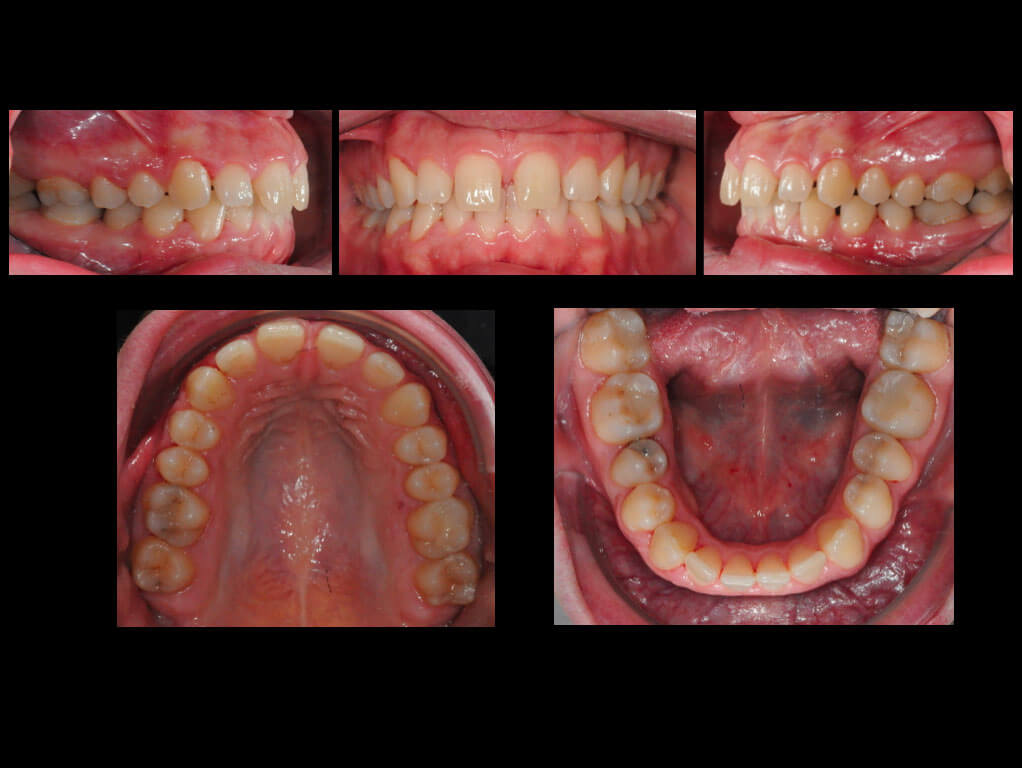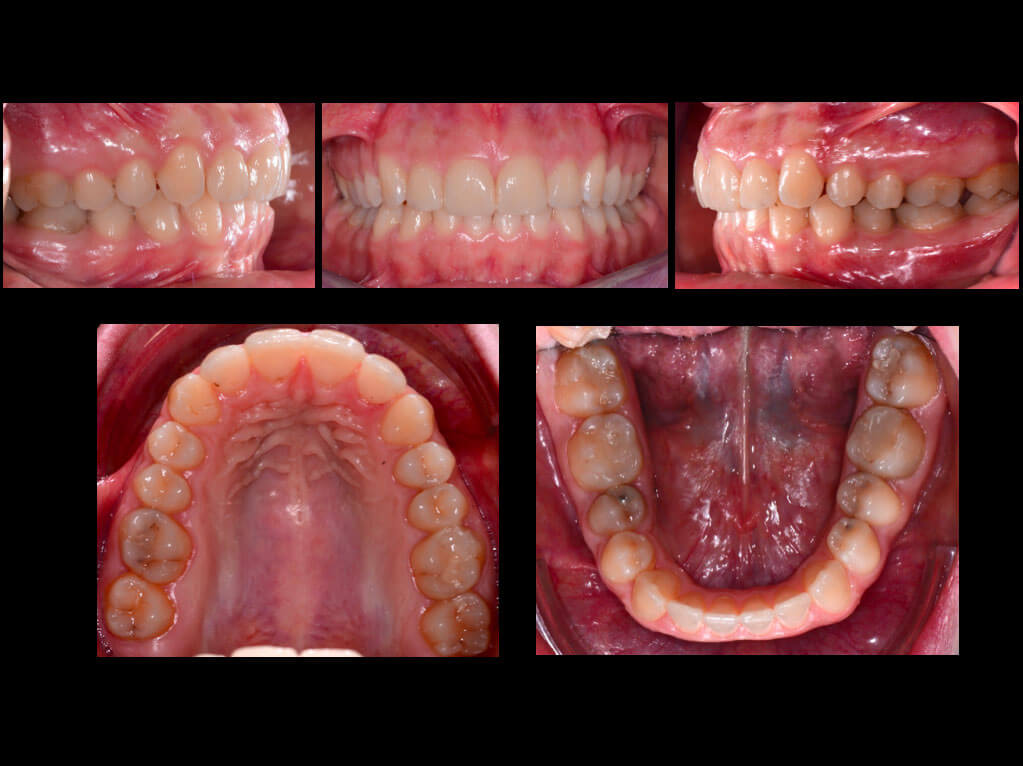A young female patient came to our attention with a diastema between the upper central incisors. The face was symmetrical, and the lips were competent, while the profile showed some mandibular retrusion. At the level of occlusion, the patient showed a weak first molar and canine class with the presence of numerous diastemas especially in the upper arch. She did not report any issues with articulation, though she did present with marginal gingivitis due to suboptimal oral hygiene.
The clinical analysis made it clear that the problem was the size of the upper incisors. This means that closure of the diastemas by retraction of the anterior group and lower stripping would not have been a good solution because from an aesthetic point of view it would have made the reduced size of the incisors even more evident. Moreover, this solution would also have meant an exacerbation of the inclination of the teeth in relation to the bone bases and the soft tissue. In this case, the only possibility was to combine orthodontic treatment with the addition of dental substance to the upper arch at the level of the incisors in order to increase their height. The aim of orthodontic treatment would be to distribute the spaces in an ideal manner, facilitating the work of the prosthetist and avoiding excessive lingualization.
A set-up was executed to plan the movements based on the prosthetic requirements, which also showed the need for a certain amount of stripping in the lower jaw. 14 upper and 14 lower aligners were planned, and grip points had to be placed on the first premolars and first molars of both arches to improve aligner anchorage.
By wearing the aligners according to instructions, the patient proved to be very cooperative. Once what had been planned was achieved, the prosthetist (Prof. S. Catapano) performed minimally invasive

